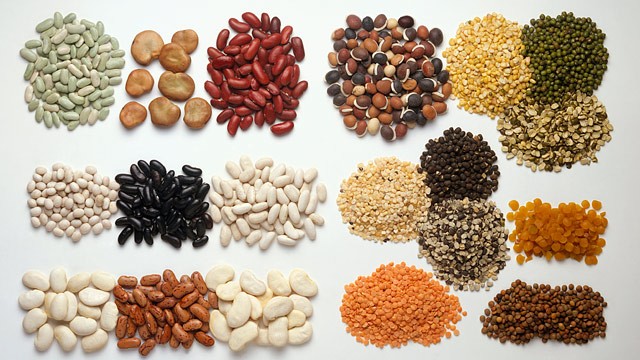Dietary protein has additional benefits including increased feelings of satiety (making you feel fuller), higher thermic effect during metabolism than fats or carbs (meaning consumption of dietary protein may increase your metabolic rate) and increased protein turnover (regeneration of body tissue). Protein contains nitrogen, enabling it to form amino acids. There are 20 amino acids that the adult body needs, classified as either essential or non-essential amino acids. The 9 essential amino acids cannot be made in the body and therefore must be provided for through protein sources in our diet. So protein does one hell of a lot for us, and we need to ensure that even when controlling energy intake in low calorie diets, we are meeting our bodies' requirements.
Animal protein sources are preferable to vegetable sources as they are considered "complete" sources of protein, meaning they contain all 9 essential amino acids. Vegetable sources ("incomplete" proteins) all lack at least one of the essential amino acids. This means vegetarians and vegans should be careful to combine proteins to ensure all essential amino acids are included in their diets.
 |
| Sources of animal protein |
When in intense physical training, the body requires a higher amount of protein than sedentary individuals to ensure adequate resources are available for muscles to rebuild and grow and for cell and tissue regeneration around the body. For most individuals, dietary protein intake is sufficient to provide for protein requirements; however, for individuals on low calorie diets, as dancers often are, or those who have relatively low protein diets (including vegetarians and vegans), protein supplementation may be useful in helping achieve optimal intakes.
There's always debate on how much protein athletes do or don't need, how much is useful and how much can be effectively utilised by the body. The official line used to be that 20g per meal was the optimal amount for protein synthesis, and anything over and above this was wasted. It has since been shown that the body can benefit from higher amounts, it is just processed and utilised more gradually. It is worth noting that this guideline was set on protein synthesis, looking at the the interplay of dietary protein and muscle, and does not refer to the much more extensive role protein has to play in the body, as noted above.
 |
| Vegan sources of protein |
High protein, low carbohydrate diets are most commonly used - out with specific medical conditions - in individuals looking to alter body composition and so, assuming the dancer is looking at maintenance of current body composition and providing optimal energy availability, low carbohydrate diets should be avoided. Specific diets to alter body composition aren't discussed here, however it should be noted that it is worth doing a considerable amount of research before embarking on any significant changes while in full-time training, as it is absolutely crucial to ensure you are meeting your daily energy and nutrient requirements.
Sources:
Bouillanne O, Curis E, Hamon-Vilcot B, Nicolis I, Chrétien P, Schauer N, Vincent JP, Cynober L, Aussel C. (2012)Impact of protein pulse feeding on lean mass in malnourished and at-risk hospitalized elderly patients: A randomized controlled trial. Clinical Nutrition.
Campbell, B. and Spano, M. (2010) NCSA’s Guide to Sport and Exercise Nutrition. Human Kinetics: Champaign, IL.
Deutz, Nicolaas E. and Wolfe, Robert R. (2012) Is there a maximal anabolic response to protein intake with a meal? Clinical Nutrition.
Hardman, A.E. (2008) Exercise, Nutrition and Health, in Maughan, R. J. (ed.) Nutrition in Sport: Olympic Encyclopaedia of Sports Medicine vol. VII. Chichester: Wiley, pp. 39-53.
Koutedakis, Y. and Sharp, N. (1999) The Fit and Healthy Dancer. Chichester: John Wiley and Sons.
Phillips, S.M. (2006) Dietary Protein for Athletes: from requirements to metabolic advantage. Applied Physiology, Nutrition and Metabolism, 31, pp. 647-654.
No comments:
Post a Comment